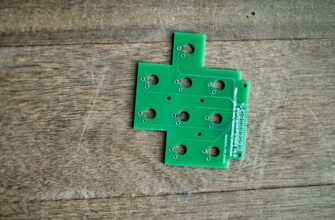## Why Hardware Wallets Are Essential for XRP Security
As a top-tier cryptocurrency, XRP demands enterprise-grade security. Hardware wallets provide an impenetrable offline vault for your Ripple holdings, isolating private keys from internet vulnerabilities. Unlike exchanges or software wallets vulnerable to hacks, these physical devices ensure complete control over your assets through military-grade encryption and PIN protection. For long-term XRP investors, a hardware wallet isn’t just convenient – it’s non-negotiable security infrastructure.
## Top 5 Hardware Wallets for XRP Storage
1. **Ledger Nano X** – Bluetooth-enabled powerhouse with Ledger Live app integration. Supports 5,500+ coins including XRP, featuring a certified secure chip and mobile compatibility. Ideal for active traders.
2. **Trezor Model T** – Touchscreen interface with open-source firmware. Offers direct XRP management via Trezor Suite, advanced passphrase encryption, and Shamir Backup for multi-shard recovery.
3. **Ledger Nano S Plus** – Budget-friendly upgrade from the original Nano S. Retains CC EAL5+ security certification with 50% more memory for managing XRP alongside other assets.
4. **Safepal S1** – Air-gapped QR code security model. Supports XRP natively without Bluetooth/WiFi exposure, featuring self-destruct mechanism against physical breaches.
5. **ELLIPAL Titan 2.0** – Fully offline metal casing with anti-tamper seals. Large touchscreen simplifies XRP transactions while maintaining complete network isolation.
## Key Selection Criteria for XRP Hardware Wallets
When choosing your XRP vault, prioritize these non-negotiable features:
* **XRP Ledger Compatibility** – Verify native support through official documentation
* **Secure Element (SE) Chips** – Look for EAL5+ certification or equivalent
* **Multi-Asset Support** – Ensure flexibility for diversified portfolios
* **Recovery Options** – 24-word seed phrases with BIP39 standardization
* **Tamper Resistance** – Anti-physical attack mechanisms like epoxy coating
* **Reputable Audits** – Third-party security verification history
## Step-by-Step XRP Wallet Setup Guide
1. **Initialize Device** – Connect to computer/mobile via USB or Bluetooth
2. **Generate Seed Phrase** – Write the 24 words on steel backup plates (never digitally)
3. **Install Companion App** – Download Ledger Live, Trezor Suite, or manufacturer software
4. **Add XRP Account** – Select “Add Account” and choose XRP from cryptocurrency list
5. **Transfer Funds** – Send test transaction first, then move bulk holdings
## XRP Hardware Wallet FAQ
**Q: Can I stake XRP using a hardware wallet?**
A: While XRP doesn’t support traditional staking, you can securely participate in liquidity pools or DeFi protocols like Sologenic through wallet-connected dApps.
**Q: How often should I update my wallet firmware?**
A: Install updates quarterly or immediately when critical security patches are released. Always verify update authenticity via official channels.
**Q: Are hardware wallets compatible with XRP’s destination tags?**
A: Yes, all recommended wallets allow destination tag input during transactions – crucial for exchange deposits.
**Q: What happens if my hardware wallet breaks?**
A: Your XRP remains secure. Simply restore access using your seed phrase on a new compatible device within minutes.
**Q: Can I use one wallet for XRP and other cryptocurrencies?**
A: Absolutely. All top hardware wallets support multi-currency management, though storage capacity varies by model.
## Final Security Recommendations
Always purchase hardware wallets directly from manufacturers to avoid supply-chain tampering. Combine your device with a passphrase for “hidden wallet” protection, and store recovery seeds in geographically separate fireproof locations. For XRP holders, this layered security approach transforms speculative assets into truly durable digital property.








